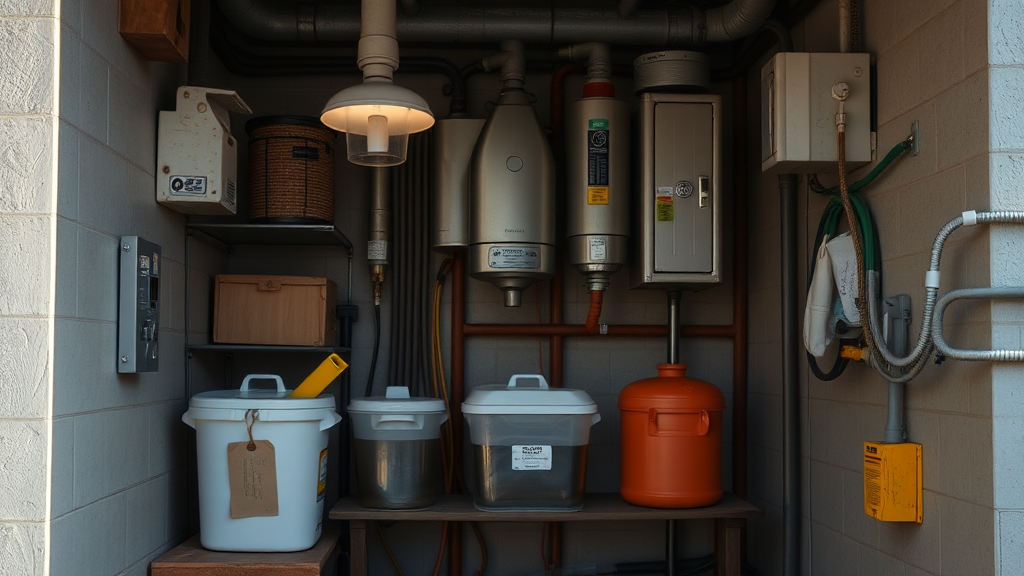Utility Bills
Free Debt Relief Help, Solutions & Tips
utility bills debt, debt type
Utility bills debt is a rising concern for Canadian households, exacerbated by financial instability and unemployment. While utility rates soar, practical strategies like reducing consumption, payment plan negotiations, and seeking government aid can help manage this debt type. Knowing your rights can prevent service disconnections.

Article: utility bills debt
Understanding Utility Bill Debt in Canada
Overview of utility bill debt as a growing concern in Canadian households., Statistics on average utility bill debts across different provinces., Comparison of utility bill debts to other forms of consumer debt in Canada.
Utility bill debt has emerged as a significant concern for many Canadian households. With the rising cost of utilities and stagnant wages, more people are finding it difficult to keep up with their monthly payments. This kind of debt often sneaks up on individuals, with late fees adding to the outstanding amounts, potentially leading to disconnection or even legal actions. What's particularly worrying is the impact unpaid utility bills can have on credit scores if they end up with collection agencies. Many Canadian households may not realize until too late that ignoring these bills doesn't make them disappear—instead, it compounds the problem further.
Statistics show that the average utility bill debts can vary significantly across Canadian provinces. For instance, while provinces like Quebec benefit from lower hydro rates due to the abundance of hydropower, others like Ontario face higher costs due to different energy policies. On average, Canadians owe about $150 to $200 monthly on utility debts, but it can skyrocket based on usage and rate hikes. These numbers might seem small compared to forms of debt like student loans or mortgages, but they add up over time. Importantly, unlike many loans, utility debts don’t offer the same flexibility in deferral or negotiation, pushing more households to seek debt relief solutions.
When comparing utility bill debts to other consumer debts, it’s clear they have their unique challenges. While credit card debts are notorious for high-interest rates, utility debts can result in immediate repercussions like service disconnection. Think of a busy family in Toronto finding their electricity cut off during a heatwave just because they couldn’t meet the last few month’s payments—it’s a dire situation that many don’t anticipate. Utility companies generally offer payment plans, known as Arrears Payment Agreements, and there is even a Winter Disconnection Ban in place to prevent service shut-offs during the coldest months. However, these solutions often require negotiation and quick action, which not all consumers are aware of or equipped to handle.
Factors Contributing to Utility Bill Debt
The impact of increasing utility rates on household budgets., The role of financial instability and unemployment in exacerbating utility debts., The effect of seasonal variances on utility consumption and bills.
Navigating the world of utility bill debt in Canada can feel like trying to solve a puzzle that changes every few months. A big piece of this puzzle is the rising utility rates, which have been challenging many Canadians' household budgets. Imagine getting your electricity bill and feeling like you might need to choose between keeping the lights on and putting food on the table. Unfortunately, that's the reality for some families as electricity, water, and heating prices rise, making it tricky to balance basic living expenses. This situation often leads to unpaid bills, followed by late fees and the dreaded possibility of disconnection. This kind of financial juggling act is one reason why it's critical to explore debt relief options before it becomes too overwhelming.
Adding fuel to the fire of utility bill debt is the financial instability many Canadians face, often exacerbated by unemployment. When there’s a job loss or unexpected financial hit, paying bills can quickly fall down the priority list. Picture this: you’re trying to stretch your savings to cover groceries and mortgage payments, and suddenly, the utility bill becomes a daunting task on your to-do list. It’s a tough spot, but hope isn’t lost. Some utility companies offer payment plans or arrears payment agreements to help people catch up. These can be a lifeline, allowing for repayment over time, as long as you’re proactive about seeking them out before disconnection becomes a reality.
Then, there’s the seemingly endless impact of seasonal variances on utility consumption. Think of your heating bill during the harsh Canadian winter, or the spike in electricity use during the summer heatwaves. These seasonal shifts can cause your utility bills to fluctuate dramatically, adding another layer of complexity to managing your expenses. While there is a winter disconnection ban for residential customers, the heightened use in colder months can still mean a hefty bill come spring. Budgeting for these inevitable peaks by setting aside a bit each month can help ease the burden. At the end of the day, keeping a close eye on consumption and exploring energy-saving tips can make a difference in managing costs year-round.
Elimiate up to 80% of Your Debt
High cost of gas, high cost of groceries, high lending rates, low salary - being in debt is not your fault! See if you qualify for government debt programs and get out of debt today!
Strategies to Manage Utility Bill Debt
Practical steps to reduce utility usage and costs., Negotiating payment plans with utility providers., Exploring government assistance programs and financial aid options available to Canadians.
Reducing utility bill debt in Canada starts with practical steps to lower usage and costs. Simple actions such as unplugging devices when not in use and switching to LED bulbs can make a noticeable difference. Installing a programmable thermostat can help manage heating costs, a significant part of utility bills especially in colder months. Let’s think of your household as a camper van, where every watt counts—by setting up energy-efficient practices, you’re essentially extending your mileage. Even small adjustments, like reducing water heater temperature and fixing leaks, can translate into savings, making your bill more manageable and less of a surprise each month.
If you’re already grappling with unpaid utility bills, negotiating a payment plan with your utility provider can be a lifesaver. Utility companies in Canada are typically required to offer Arrears Payment Agreements, allowing you to spread your overdue amounts over several months. Getting set up on one of these plans is kind of like getting a second chance at a tough video game level—suddenly, those huge bills are less daunting and more manageable. Be proactive in this conversation; reach out to your provider before the situation escalates to potential disconnection or affecting your credit.
Additionally, exploring government assistance programs can provide much-needed relief. For instance, low-income households in Ontario can apply for the Low-income Energy Assistance Program (LEAP), offering up to $500 if you’re facing acute financial hardship. It’s like having an umbrella when you’re caught in unexpected rain—it doesn’t solve everything, but it keeps you dry enough to make it through to better weather. Knowing these resources and taking advantage of them can ease the stress of paying utility bills and help you keep your finances on track.

Manage your utility bills debt effectively today.
Consumer Rights and Protections
Overview of consumer rights relating to utility services in Canada., How to file a complaint or dispute a bill with a service provider., Legal protections available to prevent disconnection of essential services.
Navigating the landscape of utility services in Canada requires an understanding of your consumer rights. Did you know that utility providers are required to send written notices or call you if you’re late on a payment? This typically happens within 20-30 days. If, like many of us, you find yourself juggling bills and miss a payment, your utility can add late fees and might consider disconnecting the service. But don't hit the panic button just yet! Before they start flipping any switches, they're obligated to offer you a payment plan. Called an Arrears Payment Agreement, this plan can stretch your repayment over 5-10 months depending on how much you owe. So, you’ve got options before the lights go out.
Finding a billing error or feeling a bill isn’t fair? You’ve got avenues to dispute it. First, contact your utility provider directly to discuss the discrepancy. If this doesn’t get you anywhere, you can escalate the issue by reaching out to your provincial energy or utility board. They’re like the referees in the billing game, there to ensure fair play. One example is the Ontario Energy Board, which provides an online complaint form to help consumers resolve disputes. Many provinces have similar systems. So, don’t just sit there scratching your head—step up and make sure your bill reflects reality, not someone’s wishful thinking.
Despite the chill of a Canadian winter, you can rest easy knowing that your utility service can’t leave you in the cold. Legal protections prevent disconnection of essential services during winter months, specifically from November 15 to April 30. And if you were unfortunate enough to get disconnected before the snow started to fall, you’d be reconnected by December 1 without any extra charges. With these protective measures in place, you can focus more on roasting marshmallows by the fireplace rather than worrying about being left out in the frost with your unpaid bills.
Real-World Cases and Expert Opinions
Case studies of individuals successfully managing and overcoming utility bill debt., Expert advice on avoiding utility bill debt in the future., Financial planner insights on integrating utility bill management into overall personal finance planning.
When it comes to managing utility bill debt, real-world success stories often start with taking decisive action. Consider Sarah, who was facing mounting utility bills while balancing other debts. By contacting her utility provider proactively, she entered an Arrears Payment Agreement, allowing her to chip away at her debt over several months with manageable monthly payments. This approach not only prevented disconnection but also avoided any negative impact on her credit score, a potential risk when bills are ignored for too long. The key here is communication and negotiation, showing that utility companies are often willing to work with customers who demonstrate a commitment to resolving their arrears.
To prevent utility bill debt from becoming a recurring problem, expert advice often focuses on proactive financial planning. One core piece of advice is to budget for utilities by treating them as essential, non-negotiable expenses each month. A financial planner might suggest setting up a dedicated utility fund, stashing a bit of cash from each paycheck. Incorporating automated payments can also help ensure timely payments and avoid late fees. However, if bill amounts are inconsistent, tracking energy usage and adopting conservation measures—like unplugging devices or using energy-efficient appliances—can help reduce bills significantly over time.
Another angle to consider is integrating utility bill management into your broader financial landscape. Financial planners often emphasize a holistic approach, where utility bills are factored into a comprehensive budget that also accounts for savings and discretionary spending. The idea is to prioritize essential payments while still allocating funds towards savings goals. Much like making sure you’ve got the right app updated on your phone, updating your financial plan regularly ensures it adapts to any changes in your income or utility rates. This integrated strategy not only provides peace of mind but also sets a strong foundation for financial health, steering you clear of the stress that uncontrolled utility debts can bring.
References
| Title, Source |
|---|
| The State of Household Debt in Canada, Statistics Canada |
| Utility Costs and Consumer Issues, Consumer Council of Canada |
| Managing Rising Utility Costs, Financial Consumer Agency of Canada |
| Consumer Rights in Utility Services, Public Interest Advocacy Centre |
| Case Studies on Debt Management, Credit Counselling Canada |
This article references information from the above sources.
Eliminate up to 80% of Your Debt
High cost of gas, high cost of groceries, high lending rates, low salary - being in debt is not your fault! See if you qualify for government debt programs and get out of debt today!